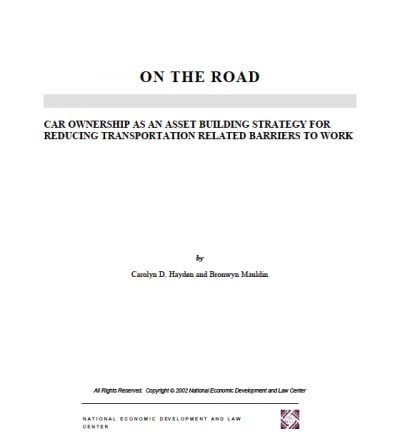Improved Quality of Life
Participants say they have experienced increased employment, improved health and overall improved sense of well-being as a result of the program.

Access to reliable transportation can make the difference between a low-income person getting and keeping a job or not. Public transportation can help, but is not a viable solution for all. A trend showing promise is the emergence of car ownership programs across the country that help low-income people acquire cars to help them get to work and improve their overall quality of life. This report examines a number of car ownership programs, highlighting best practices and needed improvements, suggests policy changes that better support mobility and job access, and proposes next steps for policymakers and private sector businesses. An updated report can be found with Shifting into Gear.
Transportation, or lack thereof, is a significant barrier to people seeking stable employment or better-paying jobs. An examination of existing U.S. car ownership programs shows promise in helping many of the working poor and welfare recipients access job opportunities and improve their overall quality of life. While gaps in these programs need to be filled, there are many best practice examples that can help guide future program developmet. Policymakers and private sector businesses also have a role to play in meeting the mobility needs of low-income workers and job seekers.
We hope you'll find value in this report. We’d love to get a little information from you, which we'll use to notify you about relevant new resources.